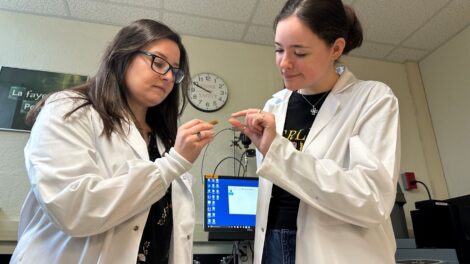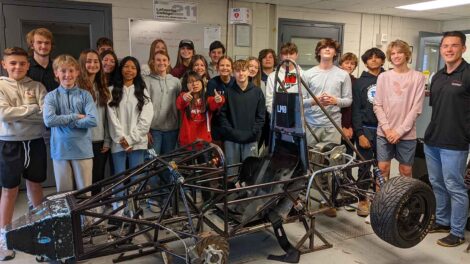Engineering success story: Lara Lash ’13
Lara Lash ’13 is an aerospace engineer at NASA Ames Research Center in California. She is currently leading a team of engineers and software developers investigating the use of unsteady pressure-sensitive paint (uPSP) in large-scale aircraft and spacecraft wind tunnel testing. uPSP optically measures surface pressure distribution over the vehicles’ surface, producing data at a never-before-seen level that is ultimately used to make rockets and other modes of flight safer and more efficient. Lash holds a Master of Science and Ph.D. in aerospace engineering from University of Tennessee. She also earned a Bachelor of Science in mechanical engineering from Lafayette College.
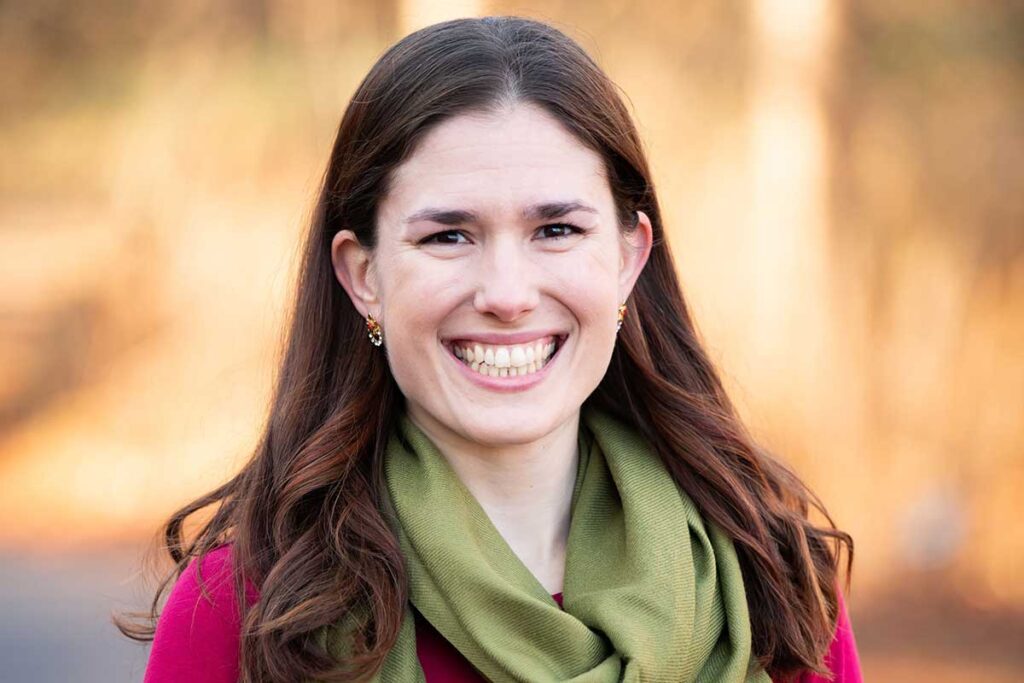
Lara Lash ’13 is an aerospace engineer at NASA Ames Research Center in California. Photo by Daniel Eggert
What do you love about the work that you do? How does it feel to make such a positive impact on the community?
One of the reasons I was attracted to the field of engineering in general is that it’s such a useful field that has practical application—whether it’s to society at large, particular communities, technology, and more. My research area is one where there’s still so much more to learn and do. I love the uPSP project because it’s advancing the state of the art. It reduces the costs of designing new vehicles, and it reduces the number of wind tunnel tests. Being at the forefront of innovation is a very privileged position to be in.
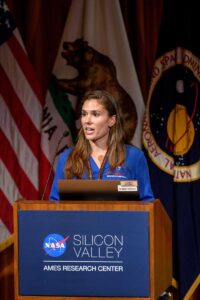
Photo courtesy of NASA
What sparked your interest in working for NASA? Was this something you always wanted to do?
This is what I’ve wanted to do since I was about 12 years old. Both my grandfather and one of my uncles are pilots. I got to fly around with them from a young age, so being in the air was a very normal part of my upbringing. In classic little kid fashion, I got into the ‘I want to be an astronaut’ phase—and never left. In the process of learning about astronauts and NASA, I realized there were so many different things involved with getting someone into space, so I decided to pursue my interest in flight while preparing to eventually apply for the astronaut corps. It was always part of the plan to study a broad engineering curriculum like mechanical engineering in undergrad, specialize in aerospace engineering in graduate school, and then doing research on high-speed flows.
Were there any professors, courses, or experiences that were particularly influential to you during your time at Lafayette and that continue to impact your work today?
I would love to highlight three professors in the Mechanical Engineering Department who really helped me: Jennifer Rossmann, Dan Sabatino, and Richard Merz. Not only did they give me a good educational foundation; they also prepared me for taking graduate-level classes. They created an environment where we felt safe to ask questions and ask for help. Prof. Rossmann, who was my academic adviser, took so much time to really get to know me and what I was interested in. We’re both very organized people, so she helped me build a semester-by-semester plan to achieve what I wanted to achieve academically. I was so grateful for the mentorship she provided anytime I was having trouble with something. Prof. Sabatino taught my Thermodynamics course, and the way he taught topics like the history of heat made me excited to do the homework and go to class. Prof. Merz taught a compressible flow class during my senior year, which was my first aerospace engineering class, where I had the opportunity to build an oversize model rocket for my senior design project. It was thanks to his expertise and support that we were able to make it happen.
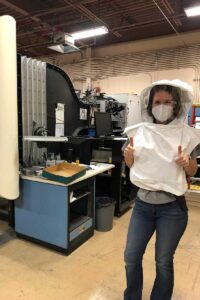
Lara Lash ’13 at work at NASA Ames Research Center
How did your other experiences at Lafayette help lay the foundation for your career?
I felt like I thrived in the liberal arts environment. Sometimes I just needed to be doing non-engineering things as well. I minored in history, I was captain of the women’s club soccer team, I rode on the equestrian team, and I worked for Admissions giving tours of the College and coordinating summer visitations for prospective students. I would argue that good engineers use all parts of their brains, and there’s no such thing as ‘soft skills.’ The leadership experiences, the fostering connections with strangers, and the environment to challenge ourselves to learn more helped shape me into an effective engineering manager and project leader here at NASA.
What are your goals for the future?
I’ve been at NASA for three years, and as I’m learning more about wind tunnel testing and how it’s done here at Ames, it’s really increasing my love for it more and more. I believe in the technology, and I believe there’s more we can do with it. So many things are achievable, and anything is possible. Also, since getting my Ph.D., I’m now officially eligible to apply to the astronaut corps. So as soon as they open up applications, I will be submitting mine.
What kind of advice can you offer to current engineering students about how to apply what they’re learning to their future careers?
Take advantage of the supportive environment at Lafayette. Lafayette does an amazing job of teaching students how to communicate as engineers—how to have a conversation with people who may or may not be familiar with the field, or how to stand up in a room full of experts and give a technical presentation. In the world of engineering, it doesn’t matter if you’re in a government lab or private industry—you need to be able to talk about your work and communicate effectively. If you can’t communicate in the correct way, at the correct time, to the correct people, you won’t get the funding you need or make the impact you want. Also, the field of engineering is incredibly broad and diverse, and there are so many different ways people can contribute. College is the perfect time to explore and really focus on what you want to learn.
